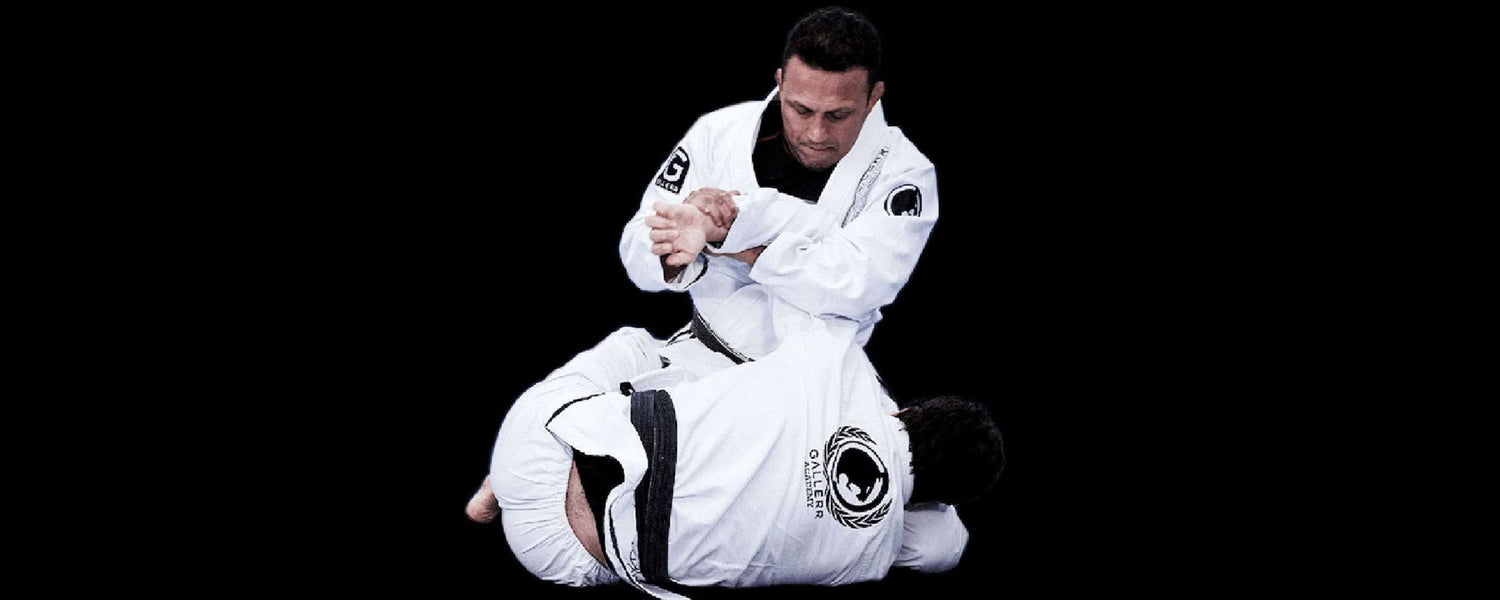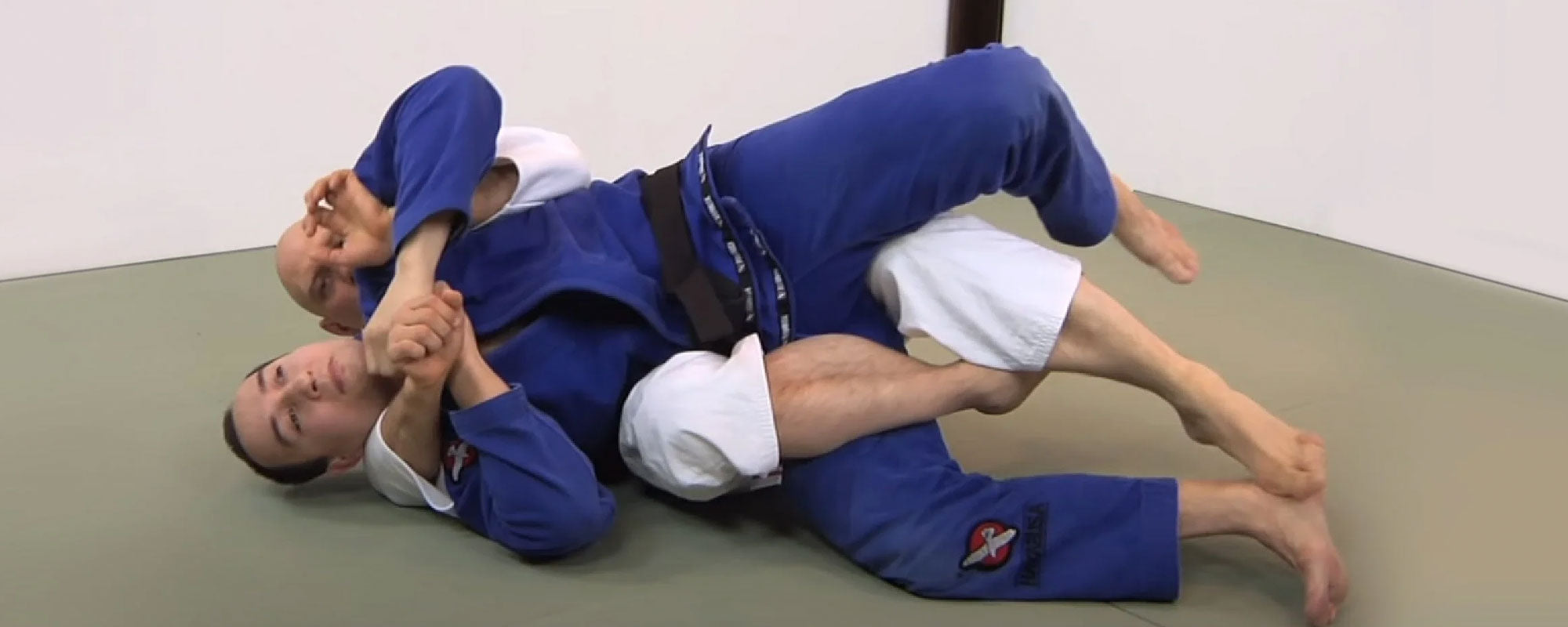Table of content
“Kimura is one of the most misused techniques in grappling.”
Have you ever spent your time on the mats? Do you aspire to compete in the UFC one day? Are you a die-hard BJJ fan and want to train in submission grappling? Well, if you can relate to any of these questions, then surely you are familiar with the term Kimura.
Though Brazilian Jiu-Jitsu is referred to as the “gentle art,” some of its submissions can be extremely ruthless. One such technique is the Kimura lock. The technique is taught in Gi and No-Gi training at the white belt level, but stays with every athlete to the black belt level and beyond. Athletes never undermine the power of the Kimura; it is one of the most reliable tools in their skillset and the best strategy for attacking submissions.
The Kimura involves isolating the shoulder and elbow joints with a strong double wrist grip. The technique allows the attacker to apply painful pressure on his opponents’ joints. This basic technique has helped athletes to gain control and beat their opponents. One of the deadliest weapons, it has become crucial to every combatants’ path to victory.
Suffice to say, the Kimura submission lock holds the power to destroy you in a competition. It is better to be prepared before entering the mat and facing your opponent.
Read on to find out the origin and importance of the Kimura lock. The article will also help you to perform your first Kimura lock with a step-by-step guide.
1. What is a Kimura Lock in Jiu-Jitsu?
shoulder lockIn submission grappling, the Kimura lock is basically the reverse ude garami. It is a shoulder lock submission method that requires a figure-four grip. The term figure-four is used in catch wrestling and refers to the joint lock that resembles the number four.
Its uniqueness lies in its versatility and power. Kimura can be applied from any position, which gives an added advantage to the combatant. This shoulder lock makes sweeps and takedowns successful. For this particular reason, many renowned grapplers plan their game strategy around this single submission.
2. History of Kimura in Other Combat Styles
The Kimura lock has been used in martial arts for more than 500 years and was first started by Japanese Jiu-Jitsu practitioners. Back in 1520, techniques similar to the Kimura lock were documented in German shoot fighting manuals.
During the 1920s, Lorigo Morelli created and introduced the double wrist lock in catch wrestling.
Robin Reed relished the honor of spreading this technique. In 1924, Reed claimed fame for himself and for the double wrist lock, when he utilized this technique to win the most coveted gold medal at the Paris Summer Olympics.
3. Historical Importance of Kimura in BJJ
History shows that the Kimura lock is older than Brazilian Jiu-Jitsu and was being utilized in wrestling long before the emergence of Brazilian Jiu-Jitsu. Different combat styles have attached different terms to the method. In submission wrestling, it is called a double wrist lock. In judo, practitioners call it gyaku ude-garami.
3.1. Masahiko Kimura vs Helio Gracie
In Brazilian Jiu-Jitsu, this armlock was named after the legendary Judoka Masahiko Kimura who visited Brazil in 1951 and challenged Helio Gracie to a historic grapple. Kimura applied a shoulder lock technique to control the much smaller Helio Gracie. A headstrong winner in his own right, Gracie refused to submit to Kimura. His shoulders could not endure the strain and as a result, he suffered a broken arm twice.
Reliving the Momentous Fight
After World War II, The United States led allied forces in the rehabilitation of the devastated and war-struck Japanese states. This resulted in large-scale social, political, and economic reforms. After the reforms, judo was banned from the Japanese school system and many judo masters lost their income, including the greatest judoka of the generation - Masahiko Kimura.
Kimura explored other opportunities to earn a living and signed up with an international entertainment company. The company arranged world tours and helped judokas to showcase their skills in a series of demonstration matches. Through this tour, Kimura met Aru Karashiko, a professional wrestling promoter, and entered Brazil and performed stage judo in a series of pro-wrestling matches.
The news of Kimura’s arrival in Brazil spread like wildfire. When it reached Carlos and Helio Gracie, they immediately challenged Kimura to a legendary grappling match against Helio. Oblivious to Gracie’s credibility and grappling prowess, Kimura declined the challenge. To test the Gracie family’s remarkable abilities on the mat, a super fight was organized against another fighter who toured with Kimura. The 22-year-old Yukio Kato became the jiu-jitsu skill gauge for Gracie.
Both fighters weighed 70 kg, but the legendary Gracie was far heavier in skill and strategy. He fought Kato twice; the first match was a draw, and the second was a stunning victory for Gracie.
After Gracie’s victory, Kimura had no other option but to accept the challenge. In Rio de Janeiro on October 23, 1951, the momentous three-round fight was set. Each round lasted for about 10 minutes.
The match had no weight limits, but it was evident that Kimura was heavier than Gracie. In the first 10 minute-round, Kimura stalled the win to fully analyze Gracie’s grappling style but ended the next round much earlier. Each time he used the “Kimura lock” to his advantage.
After the bout concluded, the 39-year-old Gracie said that he knew he had little chance to win against the famous judoka. However, he considered the challenge a golden chance to test his skills. Initially, this fight marked Gracie’s retirement, but he made a comeback in 1954 and then in 1955.
The Shock of the Century
Judo - a martial art - revolves around throws and very rarely utilizes submissions. On the contrary, BJJ is developed on an array of submissions and jiu-jitsu fighters depend on these submission methods to secure a win.
For this reason, it came as a shock to die-hard Gracie fans that a judo practitioner, Masahiko Kimura, was aware of the submission method (Kimura) when it should have been the other way around. The Kimura shoulder lock gained the limelight after this epic fight and was displayed in almost every mixed martial arts match.
4. Kimura in Martial Arts
The change of name from ude-garami to Kimura was welcomed in the mixed martial arts circuit, especially after the launch of the Ultimate Fighting Championship. The role of Helio Gracie in the name change gave more prominence to the term “Kimura.”
The UFC announcer Bruce Buffer prefers to announce the top wrist lock victories as “tap-out due to Kimura” wins. Even though he knows that the Kimura lock is the reverse of the top wrist lock and the two terms are usually not used interchangeably.
5. How Dangerous Is Kimura Lock?
The retelling of the Mashiko vs Gracie duel often brings a question to mind. Does the Kimura lock really dislocate the shoulder or is this an exaggeration of Masahiko’s grappling prowess? Though implausible, countless combatants indeed reported broken arms and dislocated shoulders after they were subjected to the Kimura lock. These injured athletes mirrored Gracie and refused to submit and tap out.
Staying in the Kimura lock for too long can damage arms and shoulders; the technique is known to hyperextend the joints, ligaments, and tendons. If an opponent fails to make a timely escape or taps out too late, he would suffer the Kimura fate.
6. The Kimura Trap System
In 2012, David Avellan designed the Kimura Trap System (KTS). The KTS submission system helped experienced athletes and beginners to apply the Kimura lock from every possible position in the bout. The system included an array of transitions, sweeps, passes, submissions, takedowns, and counters. Previously, all these techniques were used independently. With Avellan’s system in place, these techniques were combined so that the learner can switch from one technique to the next.
The Kimura Trap System is used only to attack and not pin the opponent. After attacking with Kimura, the fighter has the option to transition into other submissions, sweeps, and passes.
7. How to Do a Kimura? (Step By Step Guide)
Kimura is applied in the same way as a top wrist lock. The only difference is that it is reversed. The attacker can apply it from the side control or guard but needs to have enough space behind the opponent to make it effective.
7.1. Basic Kimura for Beginners
- Unlike the top wristlock, for Kimura, grab the opponent’s hand with your hand that is on the same side and position the opposite arm behind the opponent’s arm.
- Grab the attackers’ wrist and form a figure-four. Control the opponent’s body and bend his arm away from his body.
- Apply pressure on the shoulder joint.
- Based on the angle, you can also put a strain on the elbow joint.
7.2. Kimura from a Mount Position
The mount is a dominant grappling position in which one combatant gets on top of the other and sits on the torso. It is a favorable position for the combatant because chokeholds and joint locks can be applied easily. The bottom combatant is trapped between the top combatant and the ground. He can only attempt an escape or a sweep. Here’s how to apply the Kimura joint lock from the mount.
- Get in a mount position. Force your opponent onto his back and get on top. In a real fight, you would have to counter your opponent’s aggressive moves to gain control and apply the Kimura lock.
- After the mount, trap one of your opponent’s arms. For example, grip the right arm.
- Now bring your far leg over your opponent’s head.
- Use your left thigh, knee, and hand to lift your opponent’s arm, over your thigh.
- Apply pressure at the elbow with a thumbless grip so you can move your arm over your opponent’s shoulder and under his forearm.
- Apply a second thumbless grip, this time on your hand to complete the Kimura lock.
- Rotate their arm behind the opposite shoulder to make them tap out in pain.
7.3. Kimura from a Closed Guard
Sometimes called the full guard, a closed guard is a basic guard position. To pull off the full guard, hook your legs behind the back of the opponent and immobilize them. In the closed guard method, your opponent will be on top. Here’s how to apply the Kimura lock from a closed guard.
- Once you hook and trap your opponent with your legs, pull your legs and your opponent towards you.
- Break your opponent’s stance by pushing their arms away from their body.
- Force your opponent to place his hands on the mat. This position will keep your opponent’s hands occupied.
- Now grip their right wrist with your left hand, unlock your feet and sit up. Put all your force on the gripped hand as you do so.
- Wrap your right arm around the opponent’s right arm (making a circle), and grab your wrist.
- Maintain control by trapping your opponent’s upper arm tight against your chest.
- With his arm trapped, lie back on the ground and turn into your opponent. Use your lower body to push his hips away.
- To achieve this position you can also move your hips towards the side of your opponent’s trapped arm.
- As you perform hip escape, scissor your rival’s body with your legs.
- Put your right foot on his left hip and your left leg on his upper back.
- Firmly press your left calf in his back to prevent a reversal or an escape.
- Apply the lock by moving the opponent’s elbow towards the head and his hand to the back of his head.
7.4. Standing Kimura - Kazushi Sakuraba Style
|
Kazushi Sakuraba - Standing Kimura |
Standing Kimura - A demonstration. |
The standing Kimura lock is widely known as the chicken wing or the figure-four lock (a lock that resembles the number four). The technique became popular after Kazushi Sakuraba defeated Gracie by securing a Kimura armlock victory. Today, it is being demonstrated on every amateur and professional MMA platform, including the UFC.
- For a successful standing Kimura, figure-four your arms and put your opponent’s arm at the back.
- Then raise his elbow towards his head. You will face a lot of resistance as you perform this move. Maintaining control is the key to keeping your opponent from transitioning or escaping. Furthermore, you are vulnerable in this position. Your opponent may attack you from behind. Base out to stabilize or he will succeed in getting you down.
- Once you get him under complete control identify the target arm.
- Then put both thumbs inside his grip and apply downward force on the arms to break the grip.
- For a split second, grab the wrist with your thumb. Then quickly wrap your arm, grab the wrist with other fingers, remove the thumb, and lift his elbow.
- As you raise your opponent’s elbow high up, turn him several times.
- Finish the standing Kimura lock in a standing position or take your opponent to the ground.
7.5. Kimura from Side Control
For a successful kimura use one arm to push and the other to pull. The “pushing hand” is used to grab the wrist and immobilize the opponent. The “pulling hand” is used to lock and exert extreme pressure or a “pull force” that decreases shoulder movement. For this kimura variation, the position is everything. Therefore, use the shoulder line instead of the chest line to achieve submission.
- First, gain side control by positioning yourself at a ninety-degree angle. You can also place your hip on your opponent’s shoulder with your head leaning towards his other side.
- Your hip will put extreme pressure on his shoulders.
- To maintain control over your opponent, wrap your pulling arm around his other arm. The opposite elbow will experience increased strain.
- Use your free leg to trap your opponent’s head.
- With your hips putting pressure on the shoulder, slide your elbow underneath to grab your wrist.
- Force your opponent’s arm away from his body to immobilize it. After you achieve this position, pull the Kimura lock from the side.
- Move your head away, apply a “pushing force” with your legs and pull with your elbow.
8. Takeaway
The Kimura lock has a special place in all mixed martial arts and jiu-jitsu championships. Its use has documented historic victories. Some athletes use it as an aggressive attack while for others it results in a conclusive submission. Whether you are an accomplished maestro or just starting, the Kimura lock will prove to be the most reliable weapon in your BJJ or MMA arsenal!
Photo Credit: @pinterest












Leave a comment
This site is protected by hCaptcha and the hCaptcha Privacy Policy and Terms of Service apply.